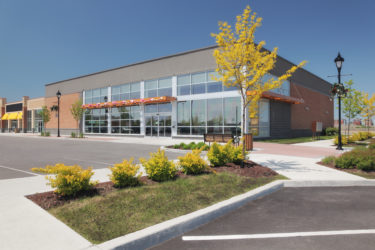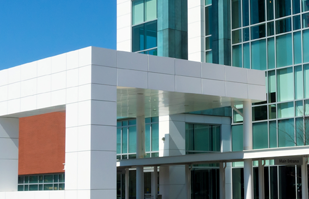Researching the Best Markets: Real Estate Investments in the Next Recession

“Location, location, location” is the mantra we all know in real estate. But we can add an addendum to that: Growth, growth, growth.
Growth is the first factor we analyze when considering locations for potential investment properties. Without growth, it is hard to justify any investment. For that reason, we particularly prefer properties located in markets with the highest population growth, as well as job, wage, and rent growth.
But given the current economic environment, the hunt for growth in a real estate context raises a significant question: How do you put real estate investment dollars to work amid a recession, which is technically the absence of growth?
When Is The Next Recession Predicted?
Two of the economists we follow most are Gary Shilling and Ray Dalio. In recent reports, Shilling has stated that he believes our next recession is already here, and that when the numbers are finally revised and published, we will then have confirmation of that fact. Dalio, founder and head of the most successful hedge fund, points to a coming sag in the economy stating, almost verbatim to Shilling’s statements, that central banks will not be able to provide the stimulus to get out of it this time.
Shilling notes, “The guys that officially call recessions, the National Bureau of Economic Research, didn’t until December of 2008 say that the recession had started in December of 2007.” This time around, Shilling predicts a recession will be more of a “run of the mill” affair, with perhaps two-quarters of negative 1.5% GDP growth. There are some pros to this type of economic contraction for commercial and multifamily real estate. Namely, lower interest rates and compressed cap rates. However, the negatives cannot be ignored.
What Happened in the Previous Recession?
Without growth, it is difficult to justify investing in any real estate, unless you really know what you are doing. Leading into the Great Recession, for instance, we advised our clients to invest, and invested our own money in, management-free, multifamily properties and residential investment properties throughout the Denver MSA.
Based on our research, we fundamentally believed that Denver would perform countercyclically in comparison to California and the majority of the country. Many of the properties we were buying in Denver in 2005 and 2006 were already discounted from their 2001 to 2003 prices. Comparing this with most other markets, especially here in California where prices had doubled in that same period, shed light on the significance of the cyclical disparity we were witnessing.
Because Denver had performed countercyclically in previous cycles, it made perfect sense to us to invest there. And it did work out: From peak to trough and today, Denver MSA, according to Case Shiller, has performed better than any other market. From 2010 until today, only San Francisco has surpassed Denver in terms of price appreciation. Anecdotally, some of our management-free investments tripled in value, as did our residential investments. However, the real estate downturn we last faced was severe, and between 2008 to 2011 not even Denver managed to evade the pain. Still, prices were already so low when we were buying that the drop was not extreme in percentage terms nor dollar terms. Moreover, Denver’s bounce back started long before anywhere else.
This time, it is not so easy to immediately identify a countercyclical market similar to Denver, which has yet to experience any decline, even as parts of California have already begun their descent. We attribute this to the new paradigm created by the most powerful economic force currently driving wage, job, and population growth – a high-tech ecosystem. Some cities have it, others do not.
Which Areas Are Performing the Best?
Not all recessions build up and unfold the same. Back in the middle to end of the last major expansion phase (2003 to 2007), we read all the books available that detailed taking advantage of the coming collapse in real estate. Additionally, we attended many events where a similar theme was expressed. Interesting that today no such “how-to” books or seminars are focused on profiting from a coming collapse in real estate. Given the extremes of the last bubble and crash and given that the bubble and crash remain fresh in the minds of policymakers, lenders, and even home buyers and investors, we have seen a subdued expansion and up-cycle this time around. This means that prices are nowhere near as inflated as the previous go-round.
As such, our coming downturn (at least in California) will also be subdued, at least according to Bruce Norris. At a recent meeting, we asked Norris about specific percentage declines he foresees. He indicated that this real estate downturn will be like the downturn California experienced from 1990 through 1997. We have been attending Norris’ events through multiple up and down cycles, and we have always found his reports and conclusions about future real estate price trends to be spot on.
He conducts reviews and issues the information based on data-driven reports and conclusions only near the peaks and troughs of California’s real estate markets. His latest report detailed the situation we are currently in and projects a much milder downturn, but a downturn, nonetheless. With this downtown, he foresees lower interest rates than we have ever seen (although, we have been hovering around historic lows already), but Norris is calling for 2% mortgage rates – almost half what they are today.
Less volatility this time creates different opportunities, and there are areas that Norris believes will perform the best. His number one state for real estate price appreciation and rent growth, even into this next recession, is Florida. It is not just Carl Icahn, David Tepper, and other billionaires who are moving to the tax-free Sunshine State. In fact, Florida has gained millionaires from New York, Connecticut, New Jersey, and other high-tax states – a trend likely to continue, at least until the tax laws change (i.e. SALT limitations).
Other areas that should do particularly well in this next recession include those that are experiencing the new economic paradigm of Technology Market growth. These include Washington, D.C., Nashville, Austin, Raleigh-Durham-Chapel Hill (North Carolina’s Research Triangle), and several others.
Similarly, the southeast, in general, should continue to perform strongly, given the growing in-migration of people and jobs, as well as wage growth, which defines many of these states today.
We believe Gary Shilling, Ray Dalio, and Bruce Norris’s data-driven conclusions that we are entering a slowdown and that we are potentially already in what will turn out to be a fairly mild recession. We also believe that opportunities emerging now are different from past cycles.
We are consistently reading the latest reports, and we embrace the role of guiding our investors through whatever each economic phase brings. We can then help investors pinpoint the best and most profitable opportunities to put their real estate investment dollars to work.
We are happy to share our insights, predictions, and reports on the best performing real estate markets. Contact us to speak with one of our partners today.










